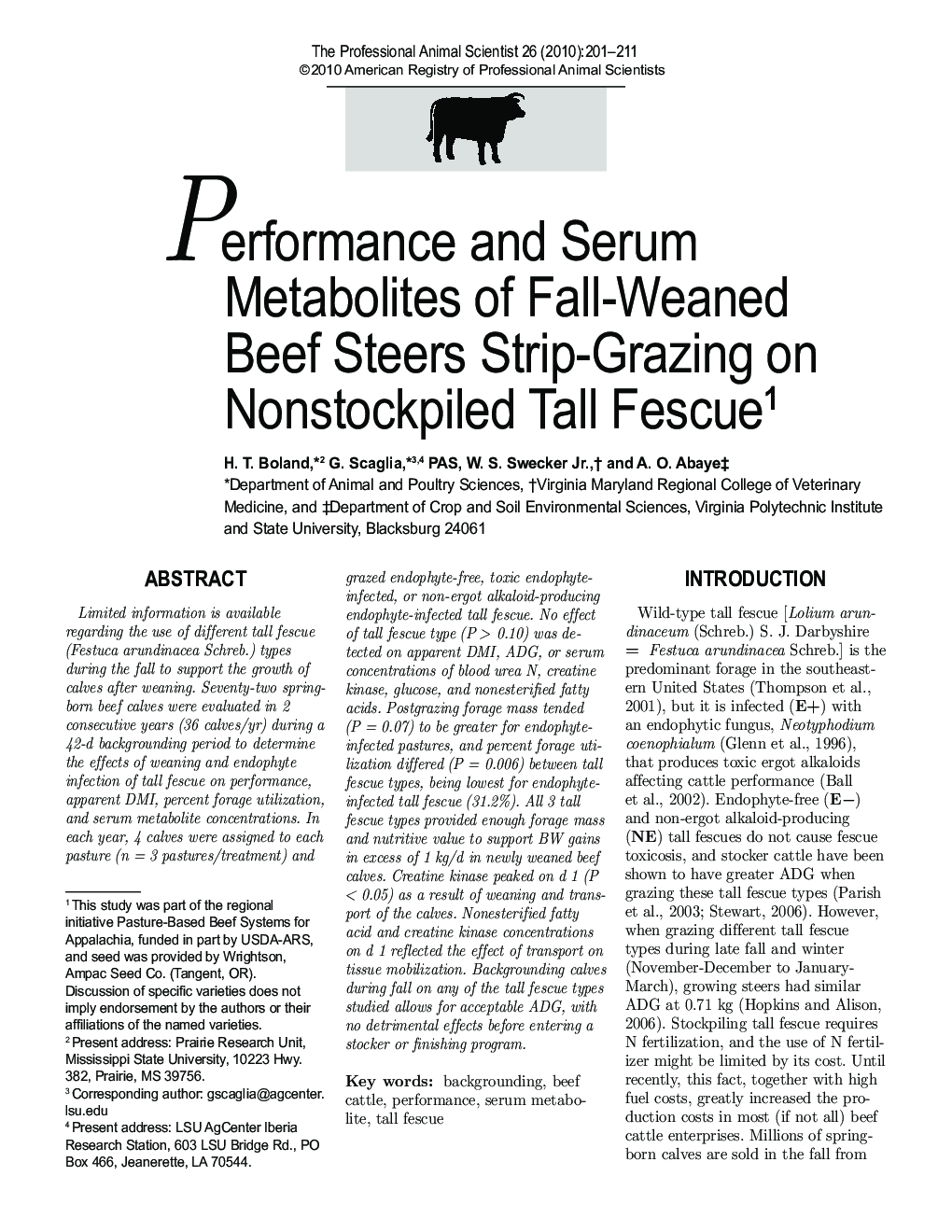| Article ID | Journal | Published Year | Pages | File Type |
|---|---|---|---|---|
| 2454110 | The Professional Animal Scientist | 2010 | 11 Pages |
Abstract
Limited information is available regarding the use of different tall fescue (Festuca arundinacea Schreb.) types during the fall to support the growth of calves after weaning. Seventy-two springborn beef calves were evaluated in 2 consecutive years (36 calves/yr) during a 42-d backgrounding period to determine the effects of weaning and endophyte infection of tall fescue on performance, apparent DMI, percent forage utilization, and serum metabolite concentrations. In each year, 4 calves were assigned to each pasture (n = 3 pastures/treatment) and grazed endophyte-free, toxic endophyte-infected, or non-ergot alkaloid-producing endophyte-infected tall fescue. No effect of tall fescue type (P > 0.10) was detected on apparent DMI, ADG, or serum concentrations of blood urea N, creatine kinase, glucose, and nonesterified fatty acids. Postgrazing forage mass tended (P = 0.07) to be greater for endophyte-infected pastures, and percent forage utilization differed (P = 0.006) between tall fescue types, being lowest for endophyte-infected tall fescue (31.2%). All 3 tall fescue types provided enough forage mass and nutritive value to support BW gains in excess of 1 kg/d in newly weaned beef calves. Creatine kinase peaked on d 1 (P < 0.05) as a result of weaning and transport of the calves. Nonesterified fatty acid and creatine kinase concentrations on d 1 reflected the effect of transport on tissue mobilization. Backgrounding calves during fall on any of the tall fescue types studied allows for acceptable ADG, with no detrimental effects before entering a stocker or finishing program.
Related Topics
Life Sciences
Agricultural and Biological Sciences
Animal Science and Zoology
Authors
H.T. Boland, G. PAS, W.S. Jr., A.O. Abaye,
